What Makes George Schlatter Television’s Best “Accident”?
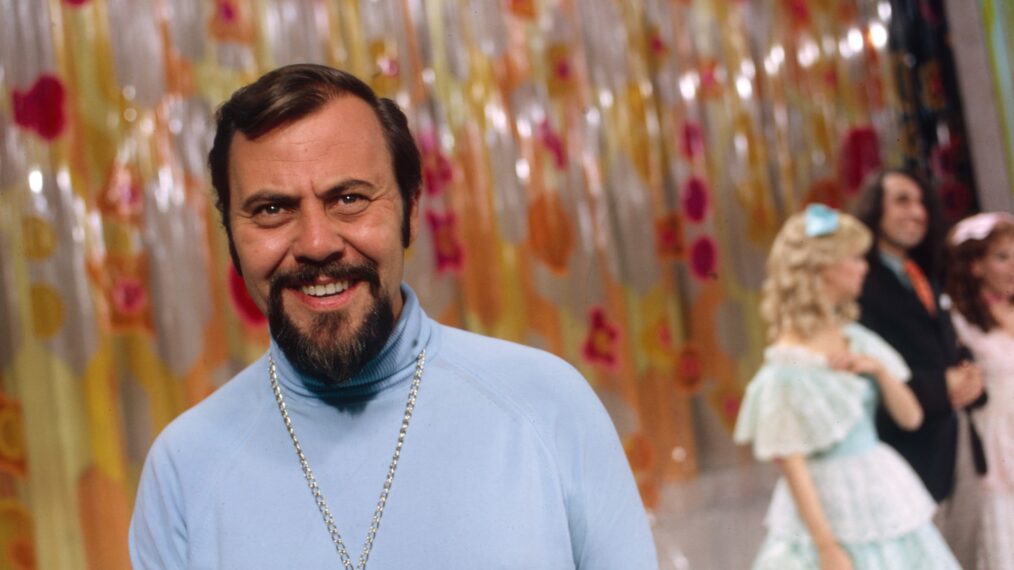
Here’s an ode of sorts to a special George. We all know a handful of famous Georges. There’s George Clooney, George Washington, George Foreman, George Bush and George Michael, but the George many average Joes don’t know by name, but should, is George Schlatter.
The 93-year-old multiple Emmy and Golden Globe winner is the genius behind TV’s beloved Rowan & Martin’s Laugh-In, who has spent a lifetime working, playing and laughing hard with Hollywood’s biggest icons. His stories — and boy, does he have ’em — from surviving Frank Sinatra’s bad moods to buying a house for Sammy Davis Jr. to relying on farting to make Judy Garland laugh fill his new book Still Laughing: A Life in Comedy, which hits bookstores and will be available online July 11. With Lily Tomlin penning the book’s foreword and Goldie Hawn flanking with the afterword, George wittingly delivers unbelievable and unheard stories (in no particular order) that will keep you thoroughly fascinated and entertained.
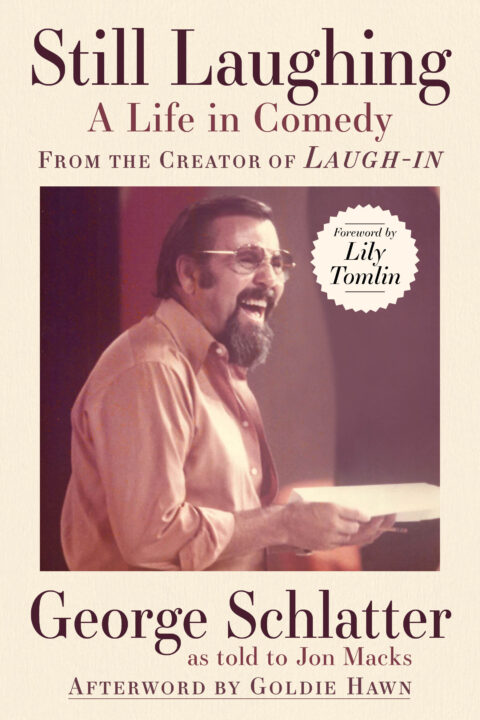
On a typical day in the office — yes, he’s still going in daily — the eternally grateful George (he gives all the credit to his wife of 67 years, Jolene Brand Schlatter) took time to talk to us about how he spent half a century as a producer, friend and often drinking buddy to a who’s-who of TV, movie and music legends. His stories and deep friendships date back to Hollywood’s golden days and include Frank Sinatra, Lucille Ball, Judy Garland, Sammy Davis Jr., Cary Grant, Jerry Lewis, Dean Martin, Sonny and Cher, Goldie Hawn, Lily Tomlin and so many others. And according to George, it was all one big accident.
“I’ve been very, very lucky. First of all, I married a wonderful girl who stuck by me. So that’s part of the reason for the longevity and the success. And a lot of it was luck,” Schlatter says of his career. “My mother was a concert violinist, and my aunt was a concert pianist, so I had a big musical background. I guess being blessed or cursed with a minimal attention span would help. But accident had a whole lot to do with the whole adventure. It’s not a career as much as it is an adventure.”
Here we share just nine short stories, so you can truly appreciate the brilliance of George Schlatter and the gift he’s given us all by penning this book.
1. For the record, George Schlatter was born on Dec. 31, 1929.
We clarify because a lot of sites may have the year wrong — thanks to George, as he did an interview in his early days and stretched the truth some, saying he was born in 1932. “I should have told a bigger lie and said I was born in 1942.”
2. Turning down managing a young Aaron Spelling in college may have been a mistake.
George went to high school in Webster Groves, Missouri, where he was captain of the wrestling and football teams. His chances for a big football scholarship were thwarted because he had polio, but he did get a scholarship to play at Missouri Valley College. His time there led to a Pepperdine football scholarship, which led to some boxing, which led to him becoming a talent manager for a young singer he dated, which led to George turning down a young Aaron Spelling’s request to be his manager. “If I stayed with Aaron instead of the blonde, by now I would have 70 shows on the air and own a 12-acre lot in Beverly Hills with a three-acre house on it.”
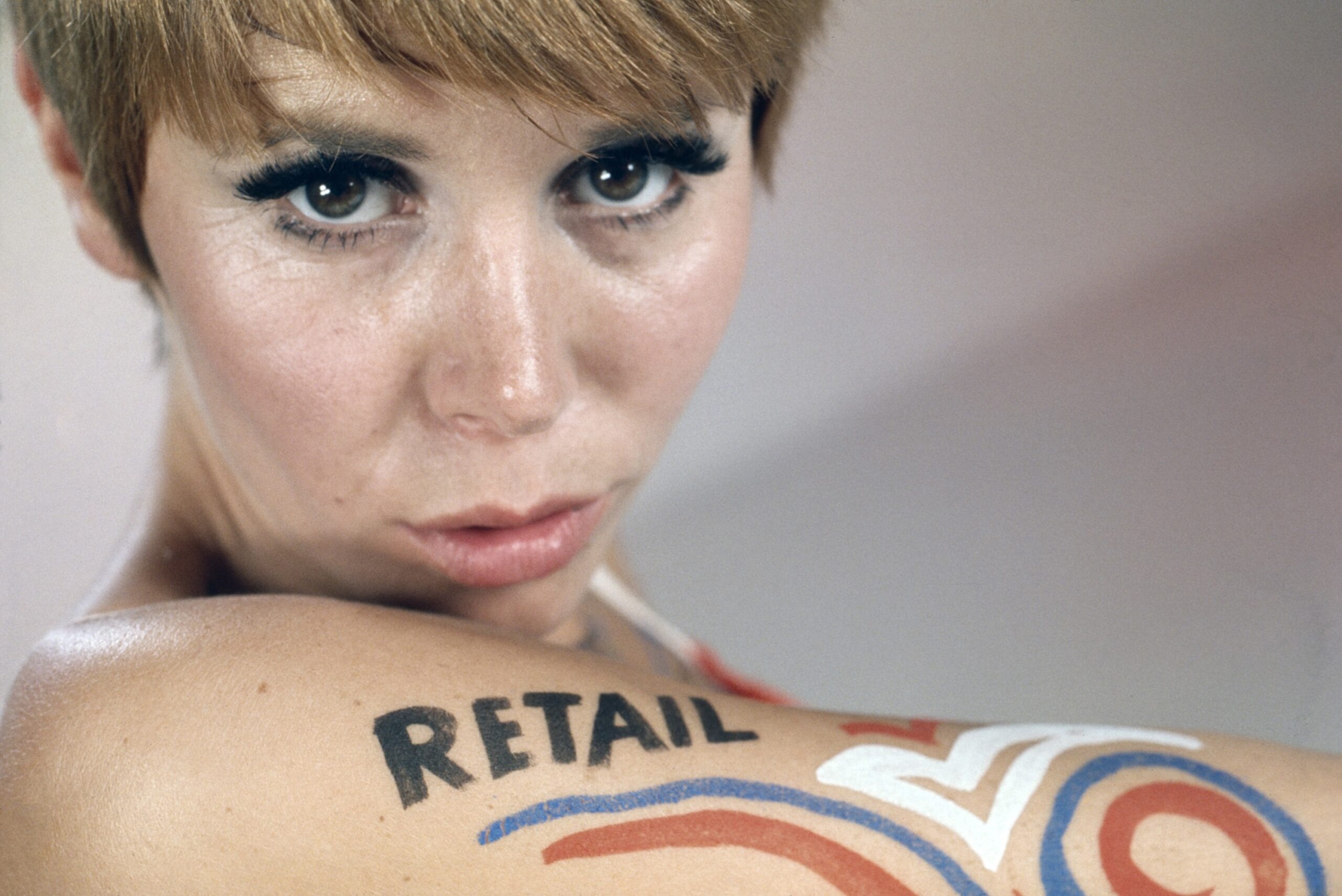
Credit: Ken Whitmore / TV Guide / Courtesy Everett Collection
3. One of his proudest moments involves the first nipple on primetime TV.
Laugh-In was known for their body credits, where they would take paint and draw designs and graffiti over Goldie Hawn’s and Judy Carne’s bodies. On a 103-degree day, George says that Judy (pictured above) suggested someone draw daisy petals around her nipple. George filmed an extreme close up with the flower painted on it, and in 1967, he put one-eighth of a second of the image onscreen without being censored. “Getting away with the Judy Carne nipple shot and putting a single hand clap under the NBC logo are two of my proudest moments.”
You need to read the book to learn about that TV clap.
4. George bought a house for Sammy Davis Jr.
“Everyone wanted to spend time with Sammy, but he was high maintenance: drugs, booze, broads, cars, cons, hoods, celebrities, porn stars and politicians. Sammy and I had fun with all of the above, often at the same time.”
“Sammy and I worked out a deal where I would buy the house in my name and subsequently transfer it to Sammy. … Sammy never forgot what I did for him.” The house was once owned by Judy Garland, and the full story is a fascinating read.
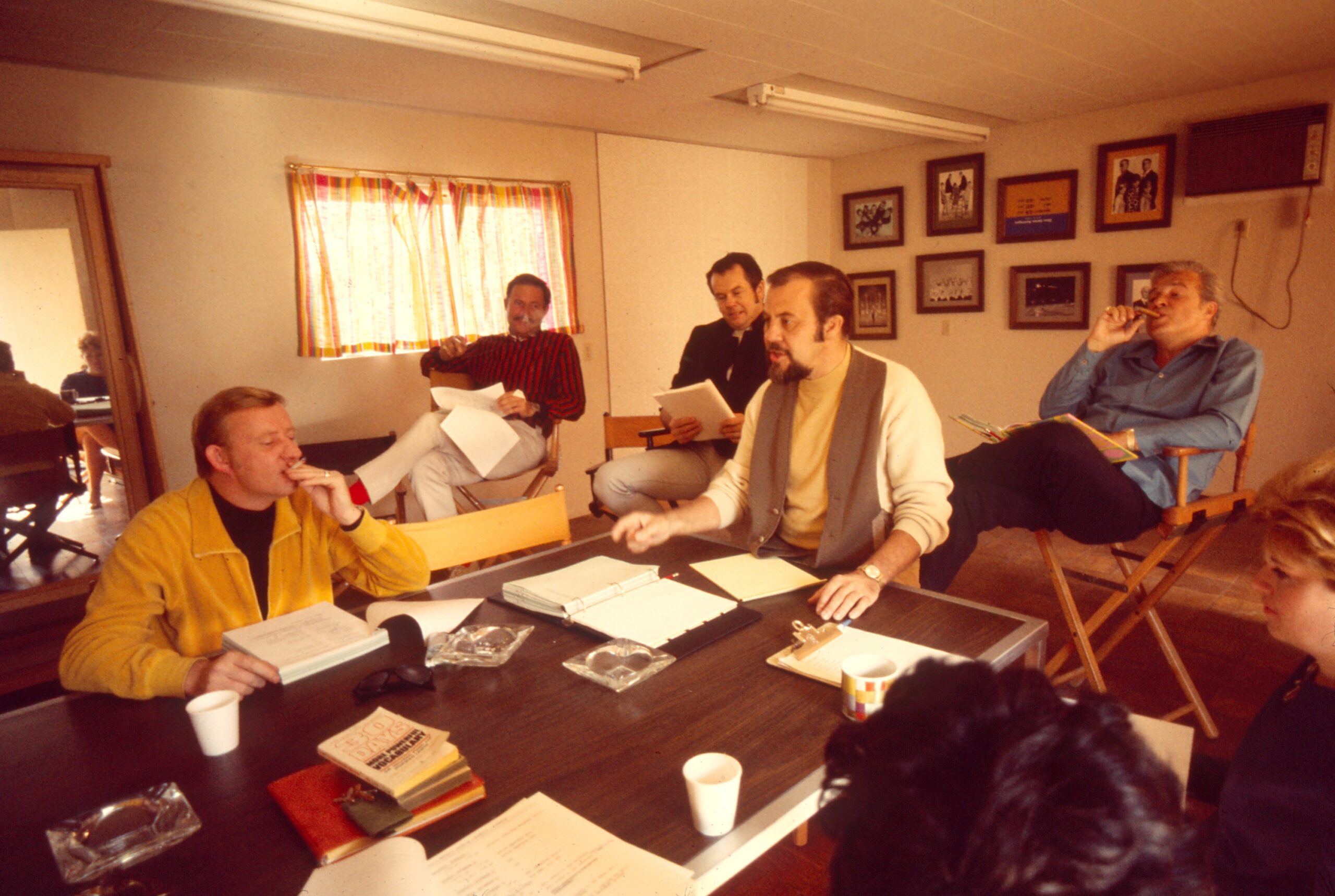
Credit: Ivan Nagy/TV Guide/courtesy Everett Collection
5. Judy Garland almost killed him.
“I wanted to do The Judy Garland Show. But I didn’t want to meet her. Because I didn’t know what you would say to Judy Garland. You need to understand that many years ago, Judy Garland was a major, major event. I was at the studio late one night and got a call to come down, and it was Judy, and she was just this tiny little person. And I didn’t know what to say. And as I’ve told you, much of my career was accident. So, I said ‘Hi. There’s no truth to the rumor that I’m difficult.’ And she looked at me and said, ‘You’re difficult.’ I said, ‘See, you’ve even heard it.’ She said, ‘Well, so am I. Let’s go have a drink.’
So, we went out. I don’t know whether this is in the book or not, but we consumed a lot, and I absolutely fell in love with the woman who was such a force field of energy. She was indeed an event. But the secret to Judy Garland was to make her laugh, and I could make her laugh.
When she got mad the first time on stage, that was an awesome thing, because it’s this adorable little person that I’d had such wonderful experiences with, who suddenly turned into a frightening image. I started to laugh, and I sang ‘Somewhere Over the Rainbow’ at one point. She said, ‘What the hell are you doing?’ She’d been getting bossy and exploding and getting very upset. I said, ‘If you’re going to produce, I’m going to sing.’ She got really angry and went into her dressing room. I followed her thinking perhaps I’d gone a little too far. I got on a coffee table, and I held a match under this sprinkler. She said, ‘What are you doing?’ I said, ‘If you don’t apologize to me, I’m going to drown you.’ Now, you must understand at this point I was in my 20s. She said, ‘Oh, OK. I’m sorry, asshole.’ [Apparently, she loved that word.] I thought I’d blown my career, but she started to laugh, and I started to laugh.”
After he got off the coffee table, Judy pulled a lamp out of the wall and chased him through her makeup room and studio, yelling “I’ll get you. Asshole.”
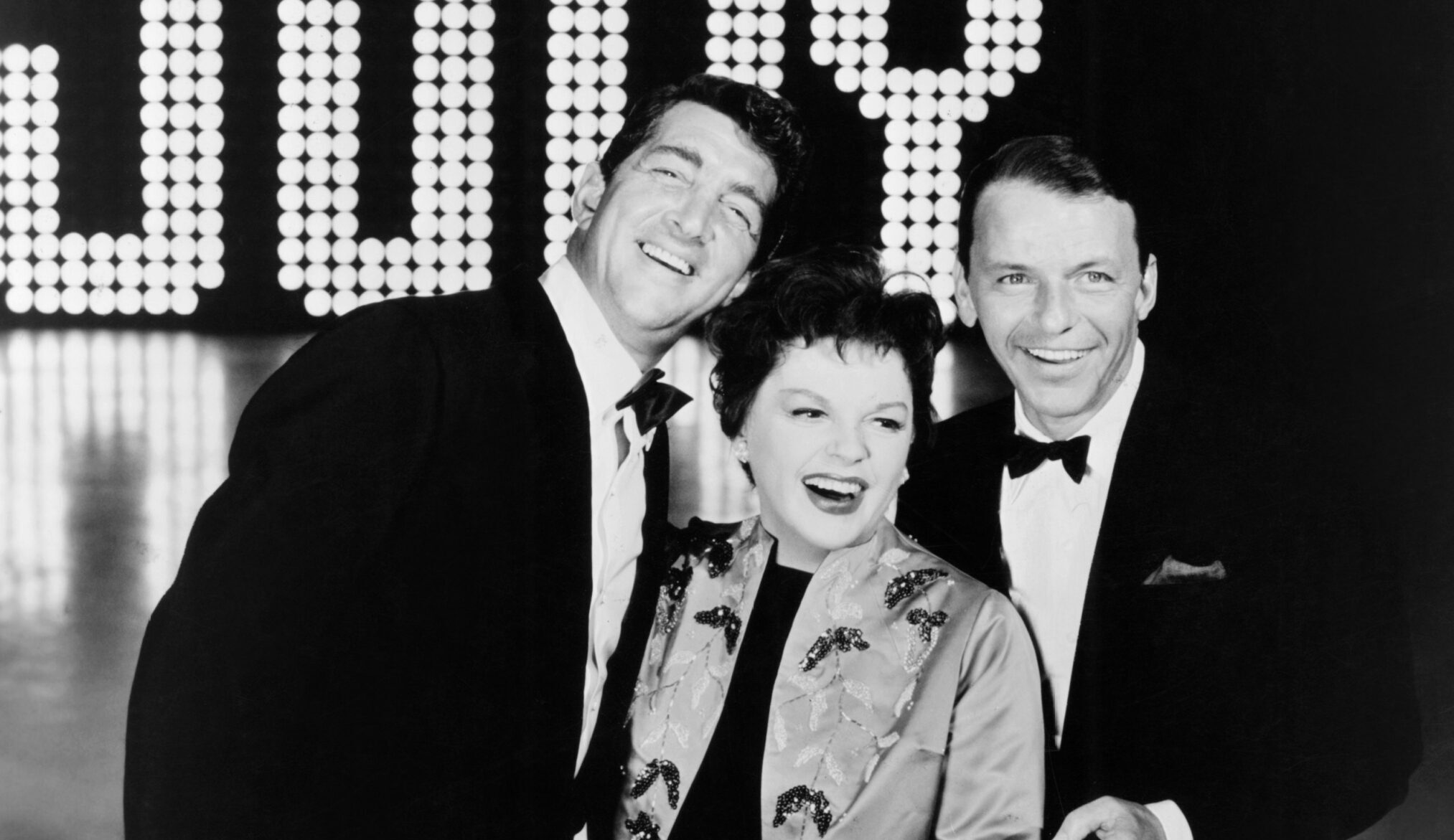
Credit: Everett Collection
“I’m being chased down the hall by America’s little girl and sweetheart, and she is swinging a lamp to try to kill me.”
From there, everything George did with Judy had a comedy element to it. But the all-time best way to get Judy to relax involved flatulence. “She loved fart jokes. A good fart joke would absolutely cause her to lose it.”
George shares in his book how he made an audio tape of loud, long farts, and when Judy got mad onstage, he played the tape. To the day she died, she had a copy of that tape.
George did five shows in six weeks — and they all aired as specials. The network wanted George to change his format of the show and do what he’d done with The Dinah Shore Show. Despite him explaining how this woman was no Dinah Shore, he got the pink slip.
[The book shares even more on this and the nightmares of being a producer and managing talent, like the time Judy forgot to decorate her daughter Liza Minnelli’s bedroom, and George and team came to the rescue.]
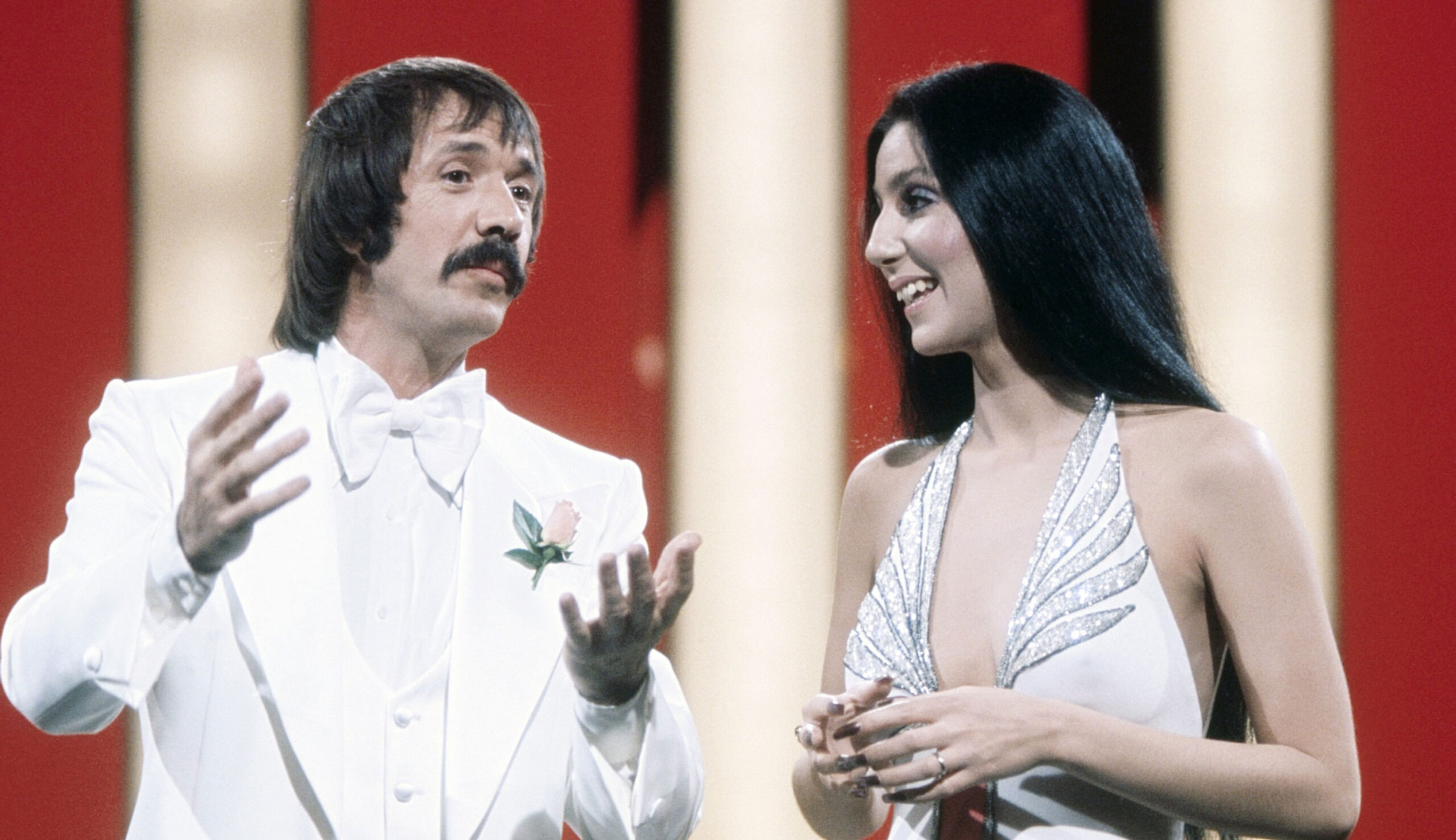
Credit: Frank Teti / TV Guide / courtesy Everett Collection
6. How Cher got the nickname Nails, and George was The Hammer.
George has some amazing stories about working with Sonny and Cher. The first time they worked together, Cher started calling him Hammer because of his approach to people and problems. George called her Nails because of her dedication to flawlessly manicured fingers as well as flawlessly cared-for toes. “When we worked together, it always seemed that we would spend 15 minutes rehearsing a sketch, and she would spend hours trimming, filing, scraping, buffing, and painlessly painting each and every finger and toenail.” But George admits he could be impatient, and they made a good Hammer and Nails team.
“I still hear from her once in a while,” George tells. “She was an adventurer. She’s a very, very, unique, talented lady with a very, very minimal attention span. But she’s an event. … I had a great time with her.”
I suggest reading his chapter on Cher, cockatoos and 350 little old ladies, or the story of Sonny and George not having a wallet and how they earned enough money to pay.
7. Was Jerry Lewis really a prick?
Not to George. “I was on team Jerry because I understood Jerry’s motive [with the Muscular Dystrophy Telethon]: the kids. Jerry devoted his life to the muscular dystrophy charity. He made no money — no salary, no expense reimbursement.”
His book further explains producing the Muscular Dystrophy Telethon and working with Lewis.
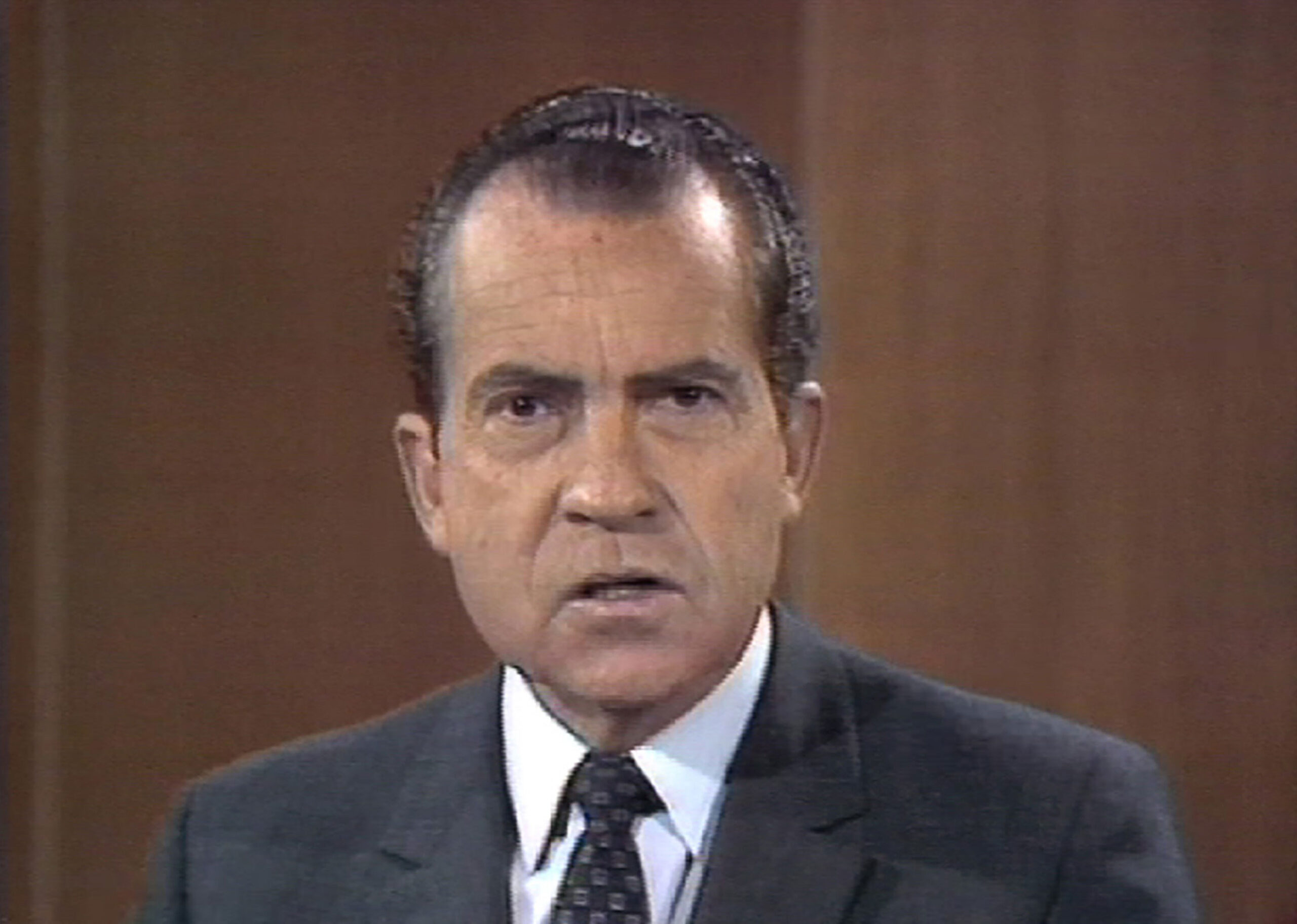
Credit: Everett Collection
8. Laugh-In and that Nixon election.
“Our adventures politically have been fairly unique,” George shares on Laugh-In. “You know, we got blamed. We had Richard Nixon come on and say, ‘Sock it to me.’ They thought that helped get him elected. And I’ve had to live with that.”
9. Next up for George, it’s on to another honor.
This August, a state-of-the-art theater will be named after George Schlatter and his wife Jolene at the National Comedy Center, which is located in Lucille Ball’s hometown of Jamestown, New York. The theater will feature a retrospective on George’s career and extraordinary legacy in comedy, including the pioneering role of Laugh-In, which changed the face of comedy and continues to influence new generations of comedic artists. This theater presentation will ensure that the tremendous impact of George’s work will be preserved for generations to come.
